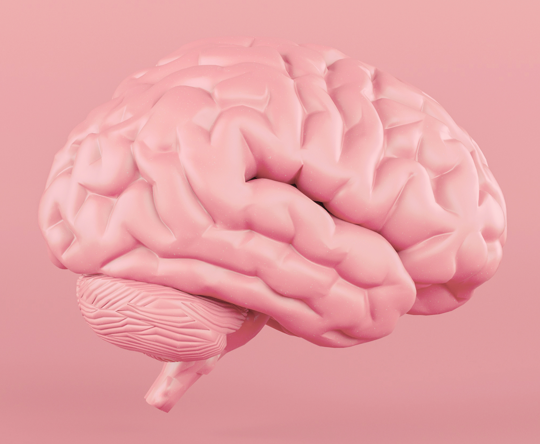IMMUNITY AND THE EYE:
The eyes reflect our emotional and physical states, they can reveal signs of some diseases even before the appearance of other symptoms
Everything we know about caring for the health of the whole body applies to the eyes as well or, better yet, applies to the eyes especially. The eyes are, in fact, a direct outshoot of the brain. A constant inflow of blood rich in oxygen and nutrients is necessary for the uninterrupted functioning of the eyes, because the eyes are one of the most metabolically demanding organs in the body in relation to their size, says chief physician Jelena Petrinović-Dorešić, MD, ophthalmologist at the Department of Ophthalmology at the University Hospital Centre “Sveti Duh.” We receive as much as 90 percent of the information from our surrounding environment through our eyes. The eye muscles can work day and night without rest and, along with the heart, are the fastest and most loaded muscles in the body. The World Health Organization estimates that out of the 2.2 billion people suffering from eye diseases worldwide, for at least a billion of them the disease could have been prevented.
Thanks to the eyes, it is possible to detect diseases in other systems — the eyes can show us symptoms of diabetes, high blood pressure or rheumatic diseases. Apart from aging and genetic predispositions, eye health is influenced by many other factors we have control over ourselves, thus preventing disease and improving our health. This is why ophthalmologists, neurologists, endocrinologists, psychiatrists, rheumatologists, otorhinolaryngologists, plastic surgeons, general practitioners, pharmacists and engineers are brought together at X-Lab — the expert research hub by JGL — to analyse the latest research and, by applying a holistic approach, to share with us how to take care of our eye health and why that is important for our whole bodies.
1 What do our eyes say about us, what diseases can be diagnosed by eye examination?
It is not said without reason that the eyes reflect our overall condition, both emotional and physical. Eye examinations often reveal diseases in the body that do not yet show other related symptoms. Allergic diseases are the most common, but sometimes systemic inflammatory diseases of the connective tissue or blood vessels can be detected, and those are much more serious and pose a threat to general health. Signs of the disease don’t necessarily appear on the eyes and on the other organs or systems at the same time, sometimes several years could pass between them. Sometimes the patient even forgets that they have had such diseases or discomforts before, so in a conversation with the doctor it is always necessary to go over previous illnesses or disorders in detail.
It is important to mention that the patient should always take old medical documentation from other doctors and specialists, if any, to an ophthalmologist for an eye and vision examination. Already established diagnoses and laboratory test results can inform and guide the ophthalmological examination itself to a significant extent. It is often thought that an ophthalmological examination serves only to check our vision and prescribe glasses, but inflammatory immune diseases serve as an example of the eyes being affected as part of systemic disorders.
2 How is allergic conjunctivitis detected?
Common signs associated with allergic inflammation of the conjunctiva (conjunctivitis in Latin) are burning, tearing (epiphora), redness, swelling of the eyelids and conjunctiva, and almost as a rule itching and consequent rubbing of the eyes. The discharge from the eye is usually mucous, stringy, mixed with tears. There is also an increased sensitivity to strong light, draught, or smoke and dust in the air. These symptoms are often accompanied by a runny nose — manifested as clear discharge from the nose, itchy nose and sneezing. These kinds of discomforts usually occur after a stay in nature on a warm and sunny day, when the concentration of pollen in the air is highest. If a person is allergic to house dust, mites, and pet hair, the discomforts will be most pronounced in contact with carpets, curtains, blankets, plush toys and similar materials, which retain a larger amount of such allergens. Recently, we have also seen an increase in allergies to preservatives and chemicals in cosmetics and cleaning products.
Clinical examination can reveal inflammatory signs on the conjunctiva — redness, accumulation of inflammatory cells, mucous secretions and swelling of the skin of the eyelids and conjunctiva, which sometimes creates real blisters that protrude from the eyelid cleft and can seem worrying to patients and their friends. In more severe cases, inflammation can also affect the cornea, most often its peripheral part right next to the sclera. The first and most simple measures to help the situation are to remove oneself from the location with high allergen concentration, wash the face with cold water and use cold compresses to reduce both the symptoms of itching and the signs of inflammation. If there are signs of allergies in the respiratory system — shortness of breath, irritated cough, wheezing — it is necessary to seek medical attention.
3 What is the difference between red and pink eye and what does the eye reveal about allergies?
Redness is one of the main signs of the inflammatory response of the body, and it is the result of capillary dilation at the point of damage. Bright redness of the conjunctiva is usually the result of bacterial or viral inflammation, usually accompanied by eye discharge. In the case of bacterial inflammation, eye discharge is thick, purulent, yellowish-green, and in the case of viral inflammation it is more mucous and whitish. Such inflammation is usually not accompanied by itching, but rather with burning sensation and pain. In contrast to a bright red eye, lighter, pink redness of the conjunctiva with glassy, transparent swelling is more often associated with allergies. Here, itching is the dominant and main symptom.
Inflammation in allergic people occurs very suddenly after exposure to the allergen, within as little as a few hours, whereas it takes more time for inflammation caused by bacteria and viruses to occur. For those, symptoms and signs appear more gradually, over a day or two. Treatment also varies depending on the cause of the inflammation. In the case of allergies, it is sometimes enough to remove the person from the environment in which the allergen is present in order for the symptoms of inflammation to subside, whereas in the case of microbial conjunctivitis, specific treatment with antibiotics or virostatics is required. If there are manifestations of the allergy on other organ systems, such as the respiratory system or skin (in the form of a rash or urticaria), it is necessary to seek advice on further diagnosis and treatment from an expert specialist.
4 What is the best way to keep our eyes healthy?
Everything we already know about caring for the health of the whole body applies to the eyes as well or, better yet, applies to the eyes especially. The eyes are, in fact, a direct outshoot of the brain. A constant inflow of blood rich in oxygen and nutrients is necessary for the uninterrupted functioning of the eyes, because the eyes are one of the most metabolically demanding organs in the body in relation to their size. This is why vascular health is a prerequisite for good eyesight. High blood pressure, smoking, diabetes or inflammatory diseases of the blood vessels that damage their walls reduce blood flow and lead to increased blood vessel leakage, which damages the retina.
In addition, certain elements such as zinc and selenium, as well as carotenoid compounds (lutein and zeaxanthin) and vitamins C and E, which protect the eyes from inflammatory damage from oxygen free radicals, are needed for the normal functioning of retinal cells, which convert luminous energy into nerve impulses. Daily meals rich in leafy green vegetables, berries, seeds and nuts, legumes and unrefined brown rice provide the body with much-needed elements for the proper functioning of the eyes. In recent years, the environmental factors that we are exposed to daily both because of work and leisure, such as looking at different electronic device screens for long periods of time, further contribute to the incidence of dry eye and eye fatigue.
Air conditioning systems also induce eye surface irritation, so taking care to protect our eye surface has become an almost indispensable part of everyday hygiene. In doing so, it is necessary to avoid products that contain preservatives because they disrupt the natural integrity of the tear film of the eye and the microbiome.
Vinka Vukosav, MD, specialist in allergology and clinical immunology, University Hospital Centre “Sestre milosrdnice”
1 What can we do ourselves to avoid getting allergies?
An allergy is an unusual and inappropriate response of the immune system to various environmental factors, i.e. allergens. Depending on the cause, allergies can be seasonal and year-round. Unfortunately, allergic diseases have been on the rise in recent years. It is important to point out that familial tendency, that is, genetic predisposition, plays a significant role in their development, so if the parents are atopic, it is very likely that the children will develop allergies. However, this is not the rule. The surrounding environment affects the development of allergies as well, particularly the duration of exposure to a certain allergen. It is up to us to change our daily habits if we notice that certain environmental factors cause us discomfort.
For example, if it is pollen that causes us discomfort, it is important to avoid being outdoors when pollen concentrations are high (biometeorological forecast should be observed). It is also important not to wear contact lenses in these situations because they attract allergens. Smoke-filled spaces should be avoided if we notice that smoke causes us discomfort, and if pets are the cause of allergies, it would be good to keep them outside of the living spaces. We must not forget that cosmetics and medicine can also be the cause of eye allergies — we should stop using such products.
2 What is the best way to take care of our immunity?
Immunity is the body’s ability to defend itself against pathogenic organisms — viruses, bacteria, parasites, fungi, and their toxins. It could be said that the immune system is an interactive system which, if it works well, will not lead to the development of disease, nor will it lead to the development of allergic reactions, even when we are exposed to allergens. In other words, if our immune system is healthy, we can expect a good quality life, while otherwise we can be susceptible to various infections, and with excessive activity even allergies. If we want to have good immunity, it is up to us to change bad everyday habits. We live in a time when we are exposed to stress daily.
Regular physical activity, even only for half an hour a day, maintaining a healthy body weight, eating a balanced diet, avoiding alcohol and quitting smoking, getting enough sleep, timely diagnosis and treatment of diseases, regular vaccinations, avoiding stress… there are just some of the healthy habits that can improve our immune system and enable us to lead a better and healthier life. It is also worth noting that overuse of antibiotics in early childhood disrupts the intestinal microflora during immune development, which can also affect the development of the allergic phenotype.
3 What does it mean that the eye is an immune privileged organ?
Certain organs in our body have the ability to tolerate antigens without the inflammatory immune response triggering. Such organs are immunologically privileged. This group includes the central nervous system, testicles, placenta, foetus and eyes.
The special relationship between the eye and the immune system was first discovered in the 1940s, when it was observed that foreign tissue transplants placed in the anterior chamber of the eye were not rejected, which would later result in the eye being an organ with an extremely low corneal transplant rejection rate. Immune privilege is an evolutionary adaptation, an active process in which specialized tissues and the immune system work together to provide immune protection without the risk of immunopathogenic tissue injury. It aims to protect sensitive organs from severe inflammation that could reduce their function and endanger patient well-being.
There are several mechanisms responsible for immune privilege, namely anatomical, cellular and molecular barriers, immune tolerance, and the immunosuppressive intraocular microenvironment. The disruption to one of these mechanisms leads to pathological changes, which can result in damage to individual organs, in this case the eyes, and, if not registered and adequately treated in time, even loss of vision.
QUIZ
SUFFERING FROM DRY EYE SYNDROME? ANSWER THESE QUESTIONS AND FIND OUT HOW TO PREVENT IT AND WHAT TO DO WHEN YOU ARE ALREADY FEELING THE SYMPTOMS
QUIZ





